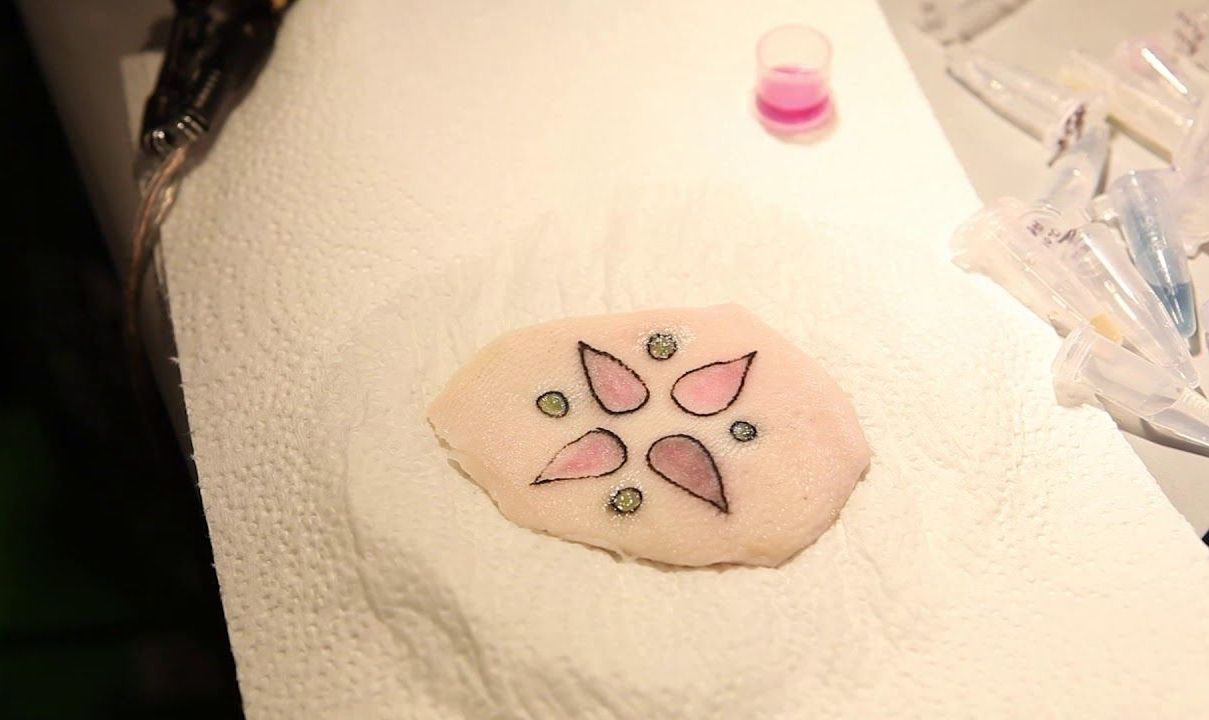Archive for the ‘privacy’ category: Page 20
Oct 5, 2017
Transparency and Privacy: what we need, want and do not understand
Posted by Mark Larkento in categories: privacy, transparency
David Brin: “Our midweek posting resumes the ongoing saga of transparency and freedom, and how (surprise?) each year’s declared “secure” system gets stripped bare, in the next. Now it’s Yahoo and Equifax and Billions of records. Millions of sincere people can see an Orwellian nightmare looming. Yet, the common reflex is to call for more shadows and walls! For us to HIDE from elites! It won’t work. It cannot work. It will never work. But there is an alternative. The very same trick that got us our freedom and wealth, in the first place.”
“We will not preserve freedom by hiding. Nor will it ever be possible to conceal info from elites. Moreover, that is not how we got the freedom that we already have.”
“We will remain free by aggressively applying these tools upon all elites. It is the only way we ever got freedom and it is the only way we can retain it.”
Continue reading “Transparency and Privacy: what we need, want and do not understand” »
Oct 2, 2017
Color-changing tattoos monitor blood glucose at a glance
Posted by Klaus Baldauf in categories: biotech/medical, privacy, wearables

Tattoos are fast becoming more than just a means of self-expression: soon they could be used for more practical applications, like tracking blood alcohol levels or turning the skin into a touchscreen. Now, a team from Harvard and MIT has developed a smart ink that could make for tattoos that monitor biometrics like glucose levels, and change color as a result.
Currently, bodily biomarkers can be monitored through a wardrobe-load of wearables, but they usually need batteries for power and wireless communication systems to transmit data. Using biosensitive inks (bio-inks), the Harvard and MIT design is self-contained, and since it works on simple chemical reactions it doesn’t require power for any data processing or transmission.
Continue reading “Color-changing tattoos monitor blood glucose at a glance” »
Aug 31, 2017
Social Experiment Known as Privacy Won’t Survive the Future
Posted by Mark Larkento in categories: economics, privacy
To help you understand the significance of this, in terms of cameras, we’re looking at 6 times more than the total number of our global population today. And in terms of sensors, we’re looking at 133 times more than the total number of our global population.
To quote economics theorist Jeremy Rifkin at length:
While privacy has long been considered a fundamental right, it has never been an inherent right. Indeed, for all of human history, until the modern era, life was lived more or less publicly, as befits the most social species on Earth. As late as the sixteenth century, if an individual was to wander alone aimlessly for long periods of time in daylight, or hide away at night, he or she was likely to be regarded as possessed. In virtually every society that we know of before the modern era, people bathed together in public, often urinated and defecated in public, ate at communal tables, frequently engaged in sexual intimacy in public, and slept huddled together en masse.
Continue reading “Social Experiment Known as Privacy Won’t Survive the Future” »
Aug 5, 2017
Tomorrow Soldier: How The Military Is Altering the Limits of Human Performance
Posted by John Gallagher in categories: military, privacy
Breakthroughs in biometric science mean future troops will fight with weapons that understand them — inside and out.
Imagine a group of volunteers, their chests rigged with biophysical sensors, preparing for a mission in a military office building outfitted with cameras and microphones to capture everything they do. “We want to set up a living laboratory where we can actually pervasively sense people, continuously, for a long period of time. The goal is to do our best to quantify the person, the environment, and how the person is behaving in the environment,” Justin Brooks, a scientist at the Army Research Lab, or ARL, told me last year.
ARL was launching the Human Variability Project, essentially a military version of the reality- TV show Big Brother without the drama. The Project seeks to turn a wide variety of human biophysical signals into machine-readable data by outfitting humans and their environment with interactive sensors.
Continue reading “Tomorrow Soldier: How The Military Is Altering the Limits of Human Performance” »
May 22, 2017
Scientists Have Created Liquid Metal Drops That Move Like T-1000
Posted by Shane Hinshaw in categories: biotech/medical, privacy, robotics/AI
Despite the NSA confirming the existence of Skynet, we all should be grateful that technology has not yet advanced to the stage where a liquid metal T-1000 terminator can shape-shift its way into your home and demand to see John Connor.
But scientists in China are making a solid effort make a less sinister version of this scenario at reality, by creating liquid metal droplets that could one day make “self-powered liquid metal machines” a real possibility.
Because of their excellent conductivity, low toxicity, and shape-shifting abilities, liquid metal alloys have been put to good use in targeting cancer cells, creating nature-inspired self-fuelled motors for robots, and many other liquid metal biomaterials.
Continue reading “Scientists Have Created Liquid Metal Drops That Move Like T-1000” »
May 12, 2017
Malware, described in leaked NSA documents, cripples computers worldwide
Posted by Sean Brazell in categories: biotech/medical, cybercrime/malcode, government, health, internet, privacy
Malicious software that blocks access to computers is spreading swiftly across the world, snarling critical systems in hospitals, telecommunications and corporate offices, apparently with the help of a software vulnerability originally discovered by the National Security Agency.
The reports of the malware spread began in Britain, where the National Health Service (NHS) reported serious problems throughout Friday. But government officials and cybersecurity experts later described a far more extensive problem growing across the Internet and unbounded by national borders. Europe and Latin America were especially hard hit.
“This is not targeted at the NHS,” British Prime Minister Theresa May told reporters. “It’s an international attack, and a number of countries and organizations have been affected.”
Continue reading “Malware, described in leaked NSA documents, cripples computers worldwide” »
May 11, 2017
Homeland Security is building a ‘biometric pathway’ for the airport
Posted by Carse Peel in categories: government, privacy, robotics/AI, security, transportation
The US government has rolled out a plan to reshape airport security around facial recognition, playing off a wealth of passport photos and visa applications.
Led by Customs and Border Protection, the plan is built around the Biometric Exit program, which will register visitors leaving the US using facial recognition. But new statements show that CBP’s plans could make facial scans necessary for US citizens as well, documenting them when they reenter the country or pass through TSA checkpoints. The result would eventually grow into an airport-wide system Customs officials call “The Biometric Pathway.”
John Wagner, deputy assistant commissioner at CBP, laid out that vision at the ConnectID conference last week. “We’re going to build this for [Biometric] Exit. We’re out of time, we have to,” Wagner told the crowd. “But why not make this available to everyone? Why not look to drive the innovation across the entire airport experience?”
Continue reading “Homeland Security is building a ‘biometric pathway’ for the airport” »
Apr 5, 2017
Inside the plan to replace Trump’s border wall with a high-tech ecotopia
Posted by Klaus Baldauf in categories: economics, policy, privacy, solar power, sustainability, transportation
The year is 2030. Former president Donald Trump’s border wall, once considered a political inevitability, was never built. Instead, its billions of dollars of funding were poured into something the world had never seen: a strip of shared territory spanning the border between the United States and Mexico. Otra Nation, as the state is called, is a high-tech ecotopia, powered by vast solar farms and connected with a hyperloop transportation system. Biometric checks identify citizens and visitors, and relaxed trade rules have turned Otra Nation into a booming economic hub. Environmental conservation policies have maximized potable water and ameliorated a new Dust Bowl to the north. This is the future envisioned by the Made Collective, a group of architects, urban planners, and others who are proposing what they call a “shared co-nation” as a new kind of state.
Many people have imagined their own alternatives to Trump’s planned border wall, from the plausible — like a bi-national irrigation initiative — to the absurd — like an “inflatoborder” made of plastic bubbles. Made’s members insist that they’re serious about Otra Nation, though, and that they’ve got the skills to make it work. That’s almost certainly not true — but it’s also beside the point. At a time when policy proposals should be taken “seriously but not literally,” and facts are up for grabs, Otra Nation turns the slippery Trump playbook around to offer a counter-fantasy. In the words of collective member Marina Muñoz, “We can really make the complete American continent great again.”
Mar 14, 2017
Your brain is unique – here’s how it could be used as the ultimate security password
Posted by Carse Peel in categories: finance, internet, mobile phones, neuroscience, privacy, security
Biometrics – technology that can recognise individuals based on physical and behavioural traits such as their faces, voices or fingerprints – are becoming increasingly important to combat financial fraud and security threats. This is because traditional approaches, such as those based on PIN numbers or passwords, are proving too easily compromised. For example, Barclays has introduced TouchID, whereby customers can log onto internet banking using fingerprint scanners on mobile phones.
However, this is not foolproof either – it is possible to forge such biometrics. Fingers can after all be chopped off and placed by impostors to gain fraudulent access. It has also been shown that prints lifted from glass using cellophane tape can be used with gelatine to create fake prints. So there is a real need to come up with more advanced biometrics that are difficult or impossible to forge. And a promising alternative is the brain.
Emerging biometric technology based on the electrical activity of the brain have indeed shown potential to be fraud resistant. Over the years, a number of research studies have found that “brainprints” (readings of how the brain reacts to certain words or tasks) are unique to individuals as each person’s brain is wired to think differently. In fact, the brain can be used to identify someone from a pool of 102 users with more than 98% accuracy at the moment, which is very close to that of fingerprints (99.8% accuracy).
















